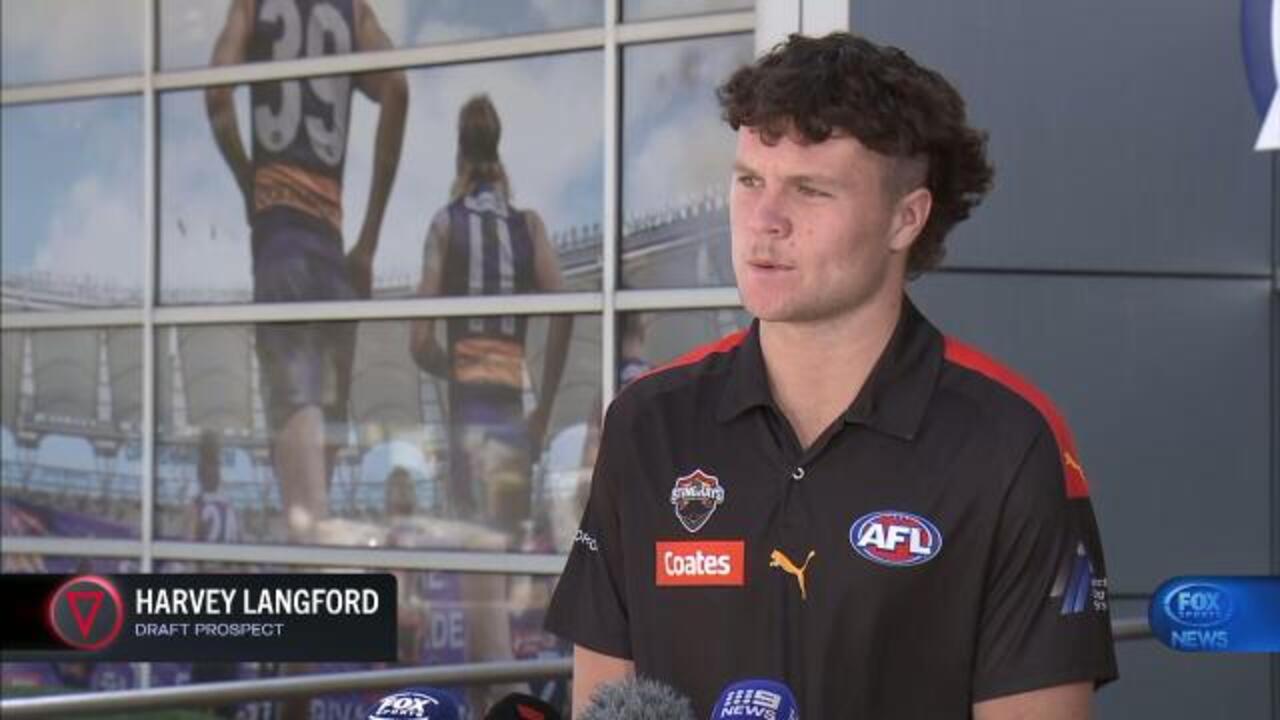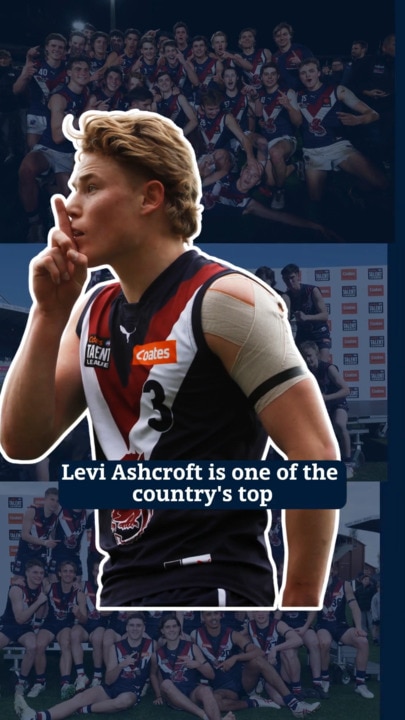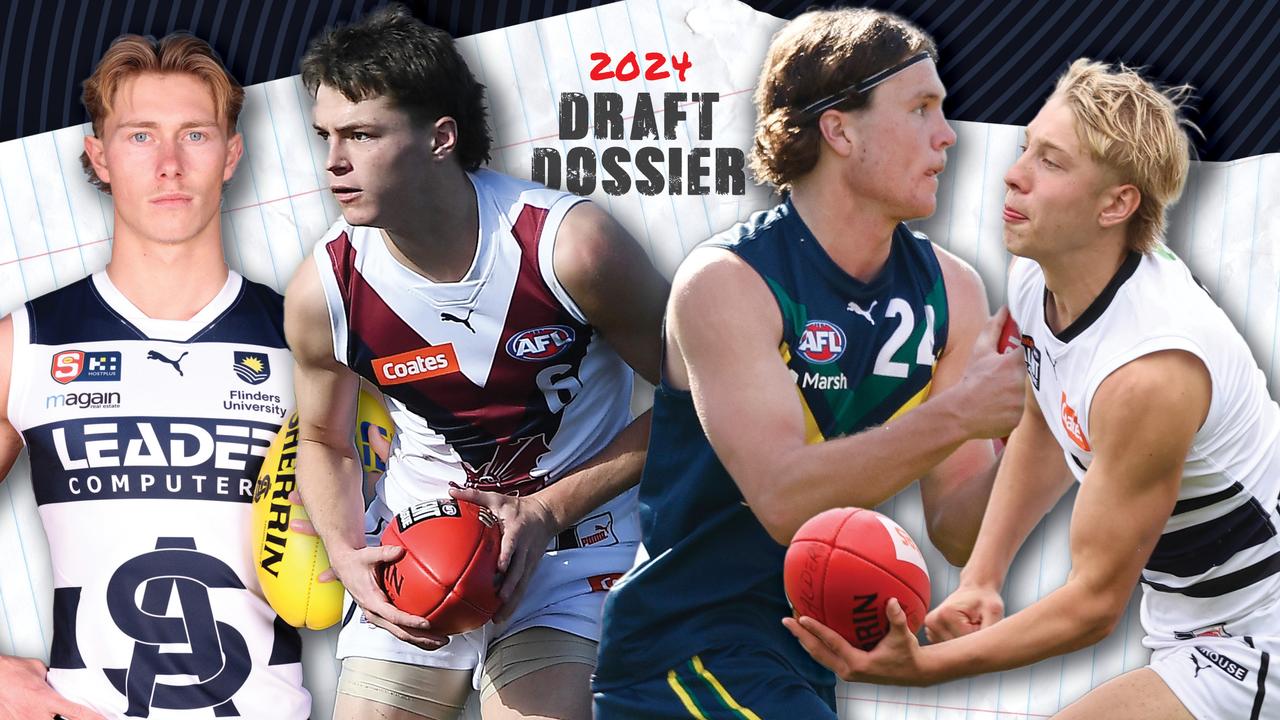AFL draft: Western Bulldogs’ Dom Milesi helps unpack how much work goes into tracking down draft prospects
Tracking dozens of games across three years for more than a hundred kids will all culminate in two nights this week. SCOTT GULLAN lifts the lid on the lengths clubs go to scout future stars.

In the 2014 Hollywood movie Draft Day, Kevin Costner is the Cleveland Browns general manager who has the weight of the world on his shoulders after the struggling franchise acquires the No. 1 pick in the NFL draft.
A quarterback stud named Bo Callahan is everyone’s selection to go No. 1 but Costner – (his character’s name is Sonny Weaver) – has a niggling doubt that escalates when his scouting staff tell him that none of Callahan’s teammates went to his 21st birthday party.
It was a big red flag for Costner and it’s these small details, which some may think are insignificant, that occupy the minds of scouts and recruiters in the countdown to what is their Grand Final.
For the past 12 months AFL clubs have been sifting through hundreds of hours of tapes, data, reports and interviews of young footballers from every corner of Australia, looking for even the smallest irregularity that can tell a bigger story, like in Callahan’s case.
The Western Bulldogs have four full-time staff focused on recruiting, led by list manager Sam Power and national recruiting manager Dom Milesi with a Victorian recruiting officer and one responsible for South Australia and Western Australia.
Then there are also 10 network staff, the “weekend warriors” as Milesi describes them, who are crucial to unearthing hidden gems from obscure places.

“They are the unsung heroes of the industry,” Milesi says. “That’s how I started in it 20 years ago at Hawthorn, they are the ones who have got 9-to-5 jobs during the week and then they will drive to Wangaratta on a Saturday to cover a player that we need looked at.
“They are all guys, or girls, who just love footy. Some are trying to get into it full-time like I did, for some it is just their passion and maybe a way to get away from home for a few hours.
“They just want to be involved in the club and help out, they do it for bugger all money. They are the unsung heroes and they don’t get enough credit across the industry for what they do.”
The weekend warriors submit reports on who they’ve seen and that feeds into a huge database the Dogs have created where every player is judged with a mark from 1 to 5 on different facets of the game whether it is kicking, marking or attitude.
“We build up a picture of the athlete over the whole year,” Milesi says.

The names that will be read out on Wednesday night in the opening round of the 2024 National Draft have been tracked by clubs since they were 15.
“We watch them a little bit in the schoolboys 15s but then it is really the 16th year, that is when we start really tracking them,” Milesi explains.
“We have got a staff member who purely does the bottom age years, he’s a consultant and does it for a number of clubs. That’s a good starting point and then we really hone in on them in their 18th year.
“It does help (the early surveillance) particularly if you get someone who hurts themselves early in that year and you haven’t seen them as much but you’ve got stuff to refer back to which is good.
“Anything can happen in their 18th year, they might have family stuff going on. We try to look across the whole totality and then other kids just develop later as well so you have to factor that in.”

After starting at Hawthorn, Milesi worked at Collingwood before joining the Dogs in 2020 and has seen the art of recruiting change significantly given the mind-blowing amount of data now available to clubs.
“We’ve now got GPS data from every game, the Champion Data stats, fitness testing, psych testing, medical risk rating, due diligence and interview ratings,” Milesi, who estimates he watches around 120 games per year, says.
“We try and make everything as objective as we can so it’s not like he’s a good kick or he’s a good kid, we try and at least at the end of the year compare them across all the areas.
“There are a lot of different factors. A kid might be a great kid but he’s got a bung knee, a fantastic kid but he can’t kick or an unbelievable kick but he’s a rat bag. We have to weigh all of them up because there is no perfect player.”
There are many stories about the bizarre questions players are asked by clubs in interviews or a messy bedroom on a home visit turning a prospective coach off a potential recruit.
“We are very relaxed when we go out (to see families), I know other clubs do it differently,” Milesi says. “We are of the opinion you are the first point of contact with that AFL club so you want to make a good impression with the family.
“They might end up going to another club but a few years down the track they might be looking to move so for us it is just about seeing what they’re like in their home environment, the impact mum, dad or rest of the family have on them.
“It’s not if they have a clean room or not, more about where they have grown up, if they are right out in the country or in the city.
“I always tell people my favourite thing about Australian rules football is that it’s a sport that doesn’t discriminate on any level. It doesn’t matter the colour of your skin, your sex now, your socio-economic background, now you can make it.
“I have been to fibro shacks in Moe and I’ve been to unbelievable houses in Cottesloe, it doesn’t matter and I don’t care what school they go to or anything like that. We’re happy to pick them.”

The days of the draft smokey are dwindling and stories like Geelong recruiting premiership hard man Max Rooke only after his father wrote a letter saying they should come up to Casterton and have a look at his son are more and more unlikely.
Although the emails still come thick and fast.
“Our rule of thumb is the longer the email the less likely they are a good player,” Milesi says.
“Or if it has come from someone with the same surname it is usually a family member. You still have a look at them in case and every year there is one or two who might bob up that you then get maybe one of your network guys to go have a look at.
“But it doesn’t happen as much now because the pathway is so strong and usually you have heard of them.”
The Dogs have four picks in this year’s draft – 17, 25, 35, 48 – and spent last Thursday briefing coach Luke Beveridge on their strategy, running through all possible scenarios which now also includes possibly moving up the draft on the night.
They will have a list of 50 players in order but it’s no longer as simple as crossing names off and taking what’s there at your turn.

“Ideally you would like to say you would take the best available and particularly early every club would do that but you can’t just be blinded to that the whole way through,” Milesi said.
“Having said that though it is probably a lot easier now with all the mechanisms with free agency, SSP and the mid-season draft, you can balance up your list a bit easier in other ways than you used to be able to when you really just relied on the draft and trade.
“We try to go best available initially and then you have to try to adjust post that, depending on your list and how many picks you have got. You have to group them by position as well to make sure we don’t pick four running defenders or four key backs.”
Like all recruiters Milesi has a few favourite picks over the journey. Paul Seedsman during his days at Collingwood is up there – he was found playing school footy for Caulfield Grammar against Geelong Grammar – while last year the Dogs were pinching themselves that Joel Freijah got through to No. 45.
The former GWS Rebel was impressive in the second half of the season, playing 13 games across halfback.
So will there be any late Bo Callahan-like intel that will shake up this year’s draft?
“You are never totally sure or comfortable,” Milesi says. “I remember one year we found out a player had a child the day of the draft.
“We then had to do a bit more work to ascertain the background as he was going to have to move interstate away from the kid so that caused an adjustment.
“You just never know, there are always things that pop up.”





